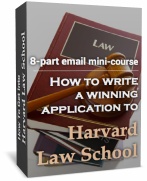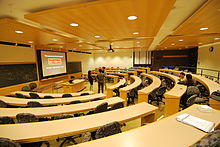There are seven 1L sections per class (550 students per class), with approximately 80 students per section. There are 6 required 1L classes: Civil Procedure, Criminal Law, Contracts, Legislation and Regulation, Torts, and Property. Your 1L section is generally the center of your social experience as a first year HLS student. There is also a Legal Research and Writing class everyone must take, where instructors known as Climenko Fellows split up each section into 2 groups for that class.
Each 1L student is also given a mentor-advisor who is part of the Board of Student Advisors (BSA); this advisor is a 2L or 3L and is supposed to help with advice and issues surrounding the 1L experience. Finally, there are big sibs and section leaders (who are faculty members) that also help shape and brighten the 1L experience for students.
The very first semester at HLS is fairly similar to the curriculum of other elite law schools. 1Ls take four core classes plus Legal Research and Writing. In the second semester, students finish the other 2 core classes, Legal Research and Writing, as well as a course in International and Comparative law and a free elective.
After the curriculum redesign that the law school implemented in 2009, there were four notable new aspects of the 1L curriculum: Legislation and Regulation, International and Comparative Law, an optional 1L reading group, and Problems and Theories in the Winter Term.
Legislation and Regulation originated from Georgetown Law Center’s experimental “Curriculum B,” which Mark Tushnet had helped to develop when he taught at Georgetown. You could say that the HLS Legislation and Regulation course serves as a proxy for Constitutional Law, which is a required class at many other top law schools but not at Harvard. The HLS website even suggests that the class is meant to prep 1Ls for Constitutional Law later on down the line.
International and Comparative Law is a required course on the thinking that it is becoming ever more critical for work as a lawyer right here in the US. The way it is framed at HLS, the 1L international law requirement is a way to understand the development and practice of domestic law in a more global context. The other 1L core classes don’t really have any international focus, so the international law requirement helps lay a foundation for understanding issues that arise in the real world involving international issues.
Optional 1L reading groups are casual ungraded reading groups that take an interdisciplinary approach to the study of law. So reading group themes are geared to connect insights and research between law and other academic disciplines. For 1Ls who studied the classic liberal arts (literature, history, economics, etc), these reading groups may feel like their reading seminars from their undergraduate days. While these groups are optional, most 1Ls join a group. They choose their top choice and specify 5 alternate choices. Each group is generally very small (fewer than twelve), and is often taught by one of the law school’s famous professors. (The seminars are also sometimes catered with food and drinks.)
Problems and Theories takes an “applied” angle to an otherwise highly theoretical 1L curriculum. The class is designed to teach some of the practical aspects of lawyering in a quasi-clinical format. Students practice handling different client situations and legal settings. The class is conducted during the January Winter Term, and it is the only class students take during that month.
Be sure to check out our law school admissions guide “How to get into Harvard Law School (whether you have the highest scores or not)” for in-depth tips and strategies on admission to elite law schools!

